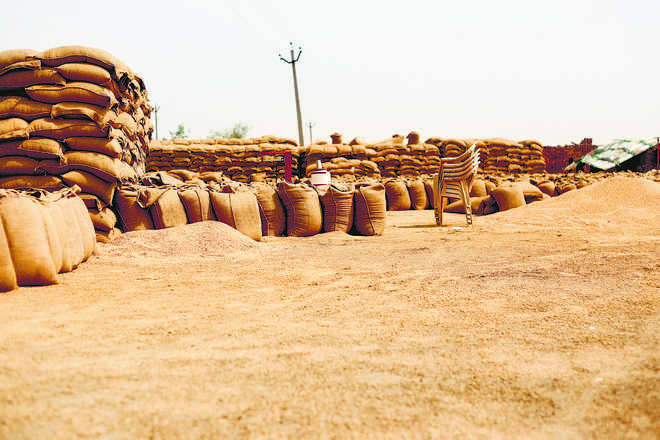Vibha Sharma
Tribune News Service
New Delhi, June 22
With the government struggling to offload some wheat and rice from the central pool stocks, impending drought-like conditions seem to be a good opportunity to exhaust the overflowing granaries.
“Having failed to adequately distribute foodgrain in PDS, the government has built up excess stocks. Considering the expected drought-like conditions in many parts of the country, it is an opportune time to distribute before the onset of the monsoon,” says Ajay Vir Jakhar, Chairman, Punjab State Farmers’ Commission.
“Millions are living in drought and the priority of the government should be to ensure that food reaches the poor. A contingency plan needs to be evolved. As many as 50,000 people are living in cattle camps in Marathwada who need urgent help,” adds agriculture expert Devinder Sharma.
With monsoon lagging behind, reports suggest around 44 per cent of India is currently reeling under drought. The situation is particularly grim in states like Maharashtra, Karnataka and Tamil Nadu. In Maharashtra, large parts are hit by drought and crop failure. The state government has set up cattle camps in Ahmednagar to ensure water and food for livestock, where, as per reports, over 50,000 farmers are settled.
India in June is sitting on 46.5 million tonnes wheat and 27.5 million tonnes rice. While on paper India has a storage capacity of around 88 MT, large quantities of wheat are lying covered with polythene in open in areas where warehouses are not sufficient. Officials claim states too are not interested in lifting grain.
It is in these circumstances that the government is trying to sell 12.5 MT of old stock from the central pool, but at rates higher than the open market. Apparently, the value of old stock has been fixed by adding cost of maintenance also. But then who will buy old and expensive wheat while fresh procurement is underway for the ongoing season?
Export too is not an option because of lack of demand in the global market and it seems the Finance Ministry is also not keen on proposal of the Food Ministry to allocate the beneficiaries additional grains under state welfare schemes. Apart from incurring additional financial burden, it is apprehensive over criticism once additional allocations are withdrawn. At the beginning of this financial year, the government had 46.4 MT food grain, more than double the buffer stock requirement of 21.0 MT. With procurement on and several months to go before this FY ends, the central pool at present (June) has 74.1 MT.
Insufficient warehouses
- In June, India is sitting on 46.5 million tonnes of wheat and 27.5 million tonnes of rice
- While on paper India has a storage capacity of around 88 MT, large quantities of wheat are lying covered with polythene in open areas where warehouses are not sufficient
Unlock Exclusive Insights with The Tribune Premium
Take your experience further with Premium access.
Thought-provoking Opinions, Expert Analysis, In-depth Insights and other Member Only Benefits
Already a Member? Sign In Now










